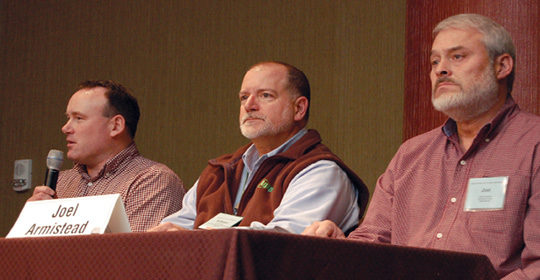No-Till Farmer
Get full access NOW to the most comprehensive, powerful and easy-to-use online resource for no-tillage practices. Just one good idea will pay for your subscription hundreds of times over.

Variable-rate applications, timely and accurate placement and cutting-edge techniques are among the tools that helped three no-tillers improve their nutrient management and profitability on their farms, and also win admiration from their peers.
H. Grant Troop of Oxford, Pa., Joel Armistead of Adairville, Ky., and John Niemeyer of Cortland, Neb., were honored with Responsible Nutrient Management Practitioner awards during the 21st annual National No-Tillage Conference held last January in Indianapolis, Ind.
Below is a synopsis of their cutting-edge fertility programs, which were recognized by No-Till Farmer and Agro-Culture Liquid Fertilizers, the program’s sponsors.
After nearly 4 decades refining his no-till practices, Grant Troop knows that poor fertility management early on can torpedo a no-till operation. Without a plan rooted in nutrient stability, Troop says growers can face radical swings in fertility.
Generally, he says those problems occur in poorer land where farmers are trying to quickly build up nutrients by applying high rates of salt-laden fertilizer.
“That can put your biology in a funk for a while,” Troop says. “We try to avoid that by not letting nutrient levels get so low that we have to put a huge slug of fertilizer on.”
To keep nutrients flowing throughout his 150-acre farm near Oxford, Pa., Troop utilizes a blend of high-residue management, cover crops and probiotic treatment applications.
His typical crop rotation consists of 2 years of field corn for grain, followed by a year of soybeans, with cereal winter rye between each summer annual crop…